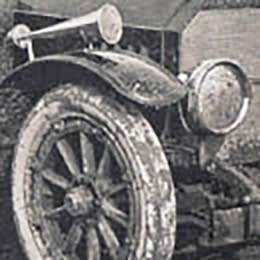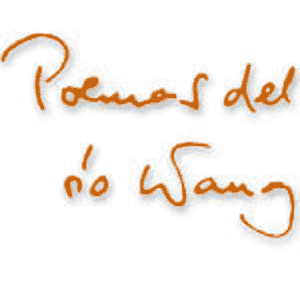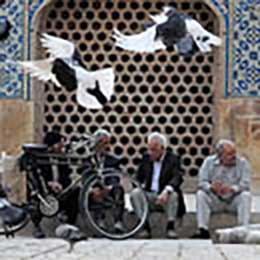Electrical transport, as throughout the Monarchy, started in the 1890s in the Czech cities as well: we know how much Kafka loved to watch from his window the trams of Prague. However, the “rubber-wheeled tram”, as they called it, was still a rarity at that time.
 České Budějovice, that is, Budweis was the first among Bohemian cities where it was introduced, on 27 October 1909: the special reason was that the city council was reluctant to create a tram rails intersection at the crossing of the two busiest roads, today’s Pražská and Strakonická. Therefore the “electric omnibus” of the Daimler-Stoll company was introduced along the latter, between the Old Town and the Sv. Otýlia cemetery, writes the site dedicated to the history of the local trolleybus, which was only available from Google cache, so I have carefully saved it. This page shows the first member of the fleet in front of the cemetery:
České Budějovice, that is, Budweis was the first among Bohemian cities where it was introduced, on 27 October 1909: the special reason was that the city council was reluctant to create a tram rails intersection at the crossing of the two busiest roads, today’s Pražská and Strakonická. Therefore the “electric omnibus” of the Daimler-Stoll company was introduced along the latter, between the Old Town and the Sv. Otýlia cemetery, writes the site dedicated to the history of the local trolleybus, which was only available from Google cache, so I have carefully saved it. This page shows the first member of the fleet in front of the cemetery:
And on this photo, found on the modern website of the municipal transport company, the same vehicle in the company of the competitor:

For the sake of the atmosphere, let us see the competitor too, on the main square and on the bridge next to the theater:


The trolleybus stopped exactly on the day of the outbreak of the war, when Švejk was still sitting in the Kalích, so he could not take it when joined up the 91th Infantry Regiment in České Budějovice. However, if he managed to return home “after the war at six o’clock”, then he might have had this delight, as in Prague they launched in 1936 a trolleybus very similar to that of Budějovice.

During WWII the trolleybus service ceased, and it only started again in 1949 all over the country, just as elsewhere in the socialist countries, probably in terms of a central Soviet plan. From the several vintage photos let us see here only the start of the first line in Brno, numbered 21, from Přemyslovo náměstí on 30 July 1949.

In the next two decades the trolley enmeshed almost all cities of Bohemia, and its modern fans keep in evidence their lines and their history stopping in the early 1970s but starting up in 1991 again in Prague, Teplice, Pardubice, Zlín and elsewhere, as that of the narrow gauge trains in Spain or Hungary. In Zlín they even had decker trolley buses, and it was there that the young chauffeur-conductor couple drove to the church on a flower-covered trolley bus in 1949. If you want to travel about this story, take a ride on one of these websites.


 The last route of trolleybus number 51 in Prague on 15 October 1972, Sunday
The last route of trolleybus number 51 in Prague on 15 October 1972, SundayBulat Okudzhava: The last trolley, 1957
Когда мне невмочь пересилить беду, когда подступает отчаянье, я в синий троллейбус сажусь на ходу, в последний, в случайный. Последний троллейбус, по улицам мчи, верши по бульварам круженье, чтоб всех подобрать, потерпевших в ночи крушенье, крушенье. Последний троллейбус, мне дверь отвори! Я знаю, как в зябкую полночь твои пассажиры, матросы твои приходят на помощь. Я с ними не раз уходил из беды, я к ним прикасался плечами... Как много, представьте себе, доброты в молчанье, молчанье. Последний троллейбус плывет по Москве, Москва, как река, затухает, и боль, что скворчонком стучала в виске, стихает, стихает. | When I cannot overcome misfortunes any more, when despair rises, I get on a blue trolley the last one, a random one. Last trolley, run all over the streets drive round all the boulevards pick up all who have suffered a crash, a crash in the night. Last trolley, open your doors to me! I know that in the chilling midnight your passengers, your sailors will come to my help. More than once I came out of trouble while touching them shoulder by shoulder Imagine, how much kindness there is in the silence, in the silence. The last trolley is floating over Moscow, Moscow, like a river, falls asleep and the pain, throbbing in my temple like a young starling, calms down, calms down. |




























































































Add comment